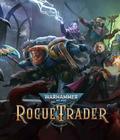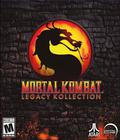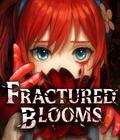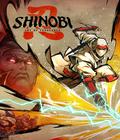We're in the middle of a veritable ninja renaissance. For a long time, both the Ninja Gaiden and Shinobi franchises lay seemingly dormant, only for us to get a brand-new game in both within a month of one another. I've always been fond of both series and very much enjoyed Ninja Gaiden: Ragebound, so I was looking forward to see how Shinobi: Acts of Vengeance stacks up. Thankfully, it's an excellent game for Shinobi fans and casual players, and it proves there's room for more than one ninja in our platforming hearts.
Shinobi returns players to the tabi of Joe Musashi, the legendary ninja of the Oboro Clan. He is living a happy life as leader of the clan, and he's busy training a new generation of ninjas. Unfortunately, a corporate baddie known as Lord Ruse has a plan to take over the world and considers the Oboro Clan his one potential downfall. An attack on the village leaves most of the clan dead, and Joe is more than a little miffed. Taking his sword in hand, he sets out to slay Lord Ruse and avenge his fallen kin.
Shinobi's plot is pretty much a bare-bones adventure story. It has a few twists and turns, but it's oddly lighthearted for a story about vengeance. The bad guys are cartoonish and largely silly, and the humor is frequent. Even Joe is a source of jokes, since he chooses to communicate entirely through grunts that others have to interpret. It's not a full-on comedy, but it's mostly a simple and breezy adventure story that doesn't get in the way of its gameplay.
Shinobi exists sort of at the middle ground between a Metroidvania and a linear action game. It's divided into multiple stages, with each stage having you go through to a boss at the end and fight it. However, the stages are their own independent maps. Some maps are incredibly linear, and others are mini-dungeons where you can go in multiple directions to take on challenges in the order you choose. Even the most linear level has a few optional side paths where you can find bonus items and unlockable challenges. There's even a map in case you get lost.
The Metroidvania aspect is that many of these can't be accessed on your first time through. Instead, once you've finished a stage, you can return to it from the world map at any time, with each checkpoint in the level serving as a warp point. As you progress, you'll gradually unlock new movement abilities for Joe, such as a grappling hook, glider, or wall-busting charged punch. With these, you can return to earlier levels and find new paths to gain additional items.
The basic movement and combat in Shinobi are closer to a beat-'em-up than a pure platformer. You have a light and heavy attack, and you can chain together various sword slashes to perform long, juggling combos against enemies. There's a good amount of hit-stun, and the only enemies you can't reliably combo are bosses and anyone with heavy armor that you need to break first. By default, Joe begins with a sword and the ability to throw kunai. Kunai are weaker and have limited uses before you need to find more, but you can throw them at a distance to stun or kill weaker foes.
You have multiple kinds of special moves in Shinobi. In addition to your regular combo attacks, you also have access to Ninpo techniques. These are special moves that let you do things like spit fire, parry attacks, use long-range air waves, or more. You can equip up to four at once and swap at any time. To use one, you're required to spend one bar of your Ninpo meter, which fills up as you attack enemies. This meter fills up very quickly, so you're able to weave together Ninpo attacks for maximum damage.
In addition, you have a Rage meter that fills up as you take and deal damage. Once it is full, you're able to do a powerful special ninja art. These include a massive screen-clearing attack, a massive self-heal, a powerful buff, and a life-draining super attack. These function more like a super move in a standard beat-'em-up, so it's rare and best saved for special occasions, but they can often turn the tide of battle.
One of the most interesting elements of combat is the Execution mechanic. While every enemy has a health bar, most also have an Execution bar that builds up in response to attacks. Powerful and heavy attacks fill it up quickly, but there are also a number of specific attacks that increase it rapidly, despite being individually weak, such as throwing kunai. Once the bar is full, the enemy will get a glowing mark over their head. When that mark is visible, you can activate an execution by tapping both R1 and L1. This instantly defeats the enemy regardless of how much health they have left.
This is already pretty handy, but where it gets really interesting is in the risk and reward mechanic. Execution marks can be inflicted on multiple enemies and the Execution mechanic instant kills everything on-screen with that mark. In addition, executing an enemy earns rewards, including health, throwing kunai, and money. The more enemies you execute at once, the greater your rewards. This means that there's a balance between removing enemies from the screen and leaving them alive to allow you to get more of a bonus once they are defeated. In comparison, simply killing an enemy without an execution earns little to no reward, so if you're not careful and accidentally kill your foes the normal way, you could miss out on precious supplies.
In addition to this, there's also another risk and reward mechanic: combo skills. You can equip two items to Joe. One is a passive item that boosts his abilities by default, while the other is a combo item. When you attack enemies, you build up a hit meter, showing the number of successful attacks you've made without getting hit. This meter, unlike in other games, doesn't vanish unless you take damage. Each equipped charm has a specific required number of hits needed to activate it.
The combat in Shinobi isn't punishingly hard on the default difficulty. Instead, it's about trying to optimize your combos and kills to perform executions for high rewards, while keeping your combo meter high. This is actually also where a lot of the combat elements come into play. You get a variety of moves that can be chained together, and each tends to have a specific use. Some build Execution faster, some launch enemies into the air or away from you, and some allow you to slip behind a foe to extend your combo.
The result is that the combat system largely feels very fun as long as you're trying to optimize for maximum rewards. If you're just trying to deal maximum damage, it can get a little repetitive, especially during the boss fights. The fights are still mostly fun, but I didn't find them as fun as the big group battles. Eking out extra damage on a boss during a vulnerable period is an important skill, but it kind of boiled down to doing damage quickly.
To me, one of Shinobi's only real flaws is in the later game, where some of the platforming, especially in the optional challenge areas, begins to trend toward the tedious. There are a number of areas that replace the relatively generous platforming with rooms full of one-hit-kill spiked walls and floors that you have to narrowly thread your way through. While none of these are too difficult, they show that Shinobi's platforming isn't very precise. I would die more than once not because of mistakes but because Joe decided to climb onto a moving box instead of hanging on the side, or a quick dash caused him to clip through a platform instead of grabbing it. It works great when the platforming is relatively loose, but the precision parts feel less polished.
Overall, there's a solid amount of game in Shinobi. In addition to the main story mode with its large number of secrets, you can also take on harder difficulty modes, an optional boss, a boss rush, and a specialized Arcade mode that lets you play the stages as a timed challenge mode. It'll take about eight hours to finish the main story mode, and it'll take some extra time to collect everything, and there's plenty of extra gameplay if you want to master the toughest challenges.
Shinobi looks gorgeous. The beautiful, hand-drawn characters and backgrounds look absolutely phenomenal, and the game shines when it's being ambitious. Some of the locations are drop-dead gorgeous, and I never got sick of seeing the variety of beautiful combat animations and cool monster designs. The music is excellent, with a solid mix of atmospheric and pulse-pounding action tracks, and they do a good job of setting up the tone of the game. The voice acting is largely good. It doesn't take itself seriously, and it veers rather intentionally toward the cheesy side, but it works.
Shinobi: Art of Vengeance is a wonderful revival of the long-dormant franchise, and it combines excellent combat with an engaging pseudo-Metroidvania gameplay style. I had a rollicking good time from start to finish. My only real complaint comes from the somewhat finicky precision platforming, but even that is limited to some optional, late-game areas. If you're a fan of the franchise, there's a lot to like, but this latest ninja revival is good for newcomers and longtime fans alike.
Score: 9.0/10
More articles about Shinobi: Art Of Vengeance










 The iconic Shinobi returns in an all-new 2D action/platformer with a unique hand-drawn look created by the team behind the hit brawler Streets of Rage 4.
The iconic Shinobi returns in an all-new 2D action/platformer with a unique hand-drawn look created by the team behind the hit brawler Streets of Rage 4.






